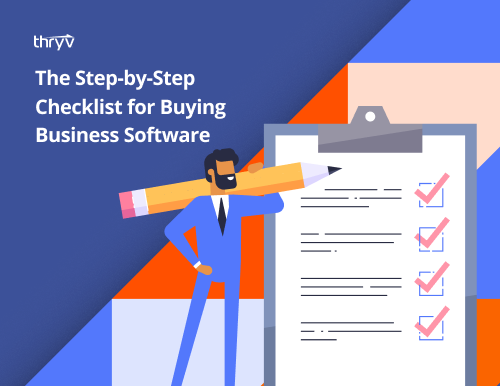Do you provide excellent customer service? Can you prove it?
Customer service metrics measure different areas of your brand’s customer experience, like how fast you respond to complaints and how happy customers are with your business. They’re crucial for monitoring customer service because they provide insight into how effectively you meet customer needs.
In this post, I’ll break down customer service metrics that small business owners should track. As a former customer support rep, I’ll explain why these metrics matter and how to calculate them accurately.

Try Command Center for Free
Learn MoreWhat are customer service metrics?
Customer service metrics track the effectiveness of customer support. They’re data points calculated using formulas and information obtained from your business’s communication channels. This data provides an overview of your customer service efforts and how happy people are with your brand.
Most of the time, software calculates customer service metrics, and integrates with your communication channels to create dashboards that track various metrics with charts and reports.
Why are customer service metrics important?
Customer service metrics help you accomplish two things. First, you can provide faster and more efficient customer support. Second, you can quickly identify underperforming or overwhelmed channels and improve them to respond quicker and more thoughtfully.
Service metrics also help you improve the quality of your customer service. You’ll obtain more insight into what people think about your business and respond to customers who have poor experiences. These individuals might submit their feedback via surveys, which provide even more information about their perception of your company.
There are dozens of customer service metrics you can monitor. And, as your company grows, you’ll have even more data to track.
For now, let’s narrow it down and look at the most important customer service metrics to measure at small businesses.
10 Customer Service Metrics
Here are 10 customer service metrics that small business owners should track.
Customer Service KPI Metrics
KPI stands for “key performance indicator.” These metrics summarize your customer service efforts. You should prioritize this information if you only want to monitor a handful of data points.
1. Customer Satisfaction Score (CSAT)

CSAT is short for “customer satisfaction score.” It represents how happy a customer or group of customers are with your brand. You can use it to calculate overall satisfaction with your business or the satisfaction of one customer’s experience with your company.
Formula:
(Happy Customers/Positive Experiences ÷ Total People/Experiences) x 100 = CSAT
Example:
(50 Happy Customers ÷ 500 People) x 100 = 10% Customer Satisfaction Score
2. Net Promoter Score® (NPS®)

Net Promoter Score® or NPS® is similar to CSAT in that it represents how happy customers are with your business. However, NPS® uses a Likert scale, which measures customer experience from one to ten.
Negative comments or “detractors” are scores from zero to six. Neutral comments are between seven and eight, and positive or “promoter” comments are nines and tens.
NPS® also provides a comment box where customers can provide additional information about their scores.
Like CSAT, NPS® is measured for individuals or your entire brand.
Formula:
(Sum of All NPS® ÷ Total NPS®) = NPS®
Example:
NPS®: 7, 8, 5, 2, 10
(32 ÷ 5 scores) = 6 NPS®
3. First Reply Time (FRT)

First reply time (FRT) shows how quickly you respond to customer issues. It measures how long it takes for someone to call, text, or reach out via social media and for your business to reply.
FRT is useful for all communication channels and an important metric that affects customer experience. The longer customers wait for a reply, the less likely they will have a good experience with your business.
Formula:
Time of First Response – Time of Contact = First Reply Time
Example:
First Response: 1:30pm
Time of Contact: 1:25pm
1:30pm – 1:25pm = First Reply Time of 5 minutes
4. Customer Effort Score (CES)

Customer effort score measures how easy it is for customers to get what they want from your brand. It measures your product’s usability, appointment booking services, website, or other touchpoints where customers need something from your business.
Similar to NPS®, CES is collected using a numbered scale. People at the low end of the scale exerted more effort, while people at the opposite end had an easier experience.
Like the other metrics, you can track customer effort scores for individual customers and your entire business. You can also define what a “good” score is. However, if you’re using a seven-point scale, most businesses will consider a five, six, or seven as a positive score.
Formula: (Good Scores ÷ Total Scores) X 100 = Customer Effort Score
Example:
(85 Good Scores ÷ 100 Total Scores) X 100 = 85%
Customer Support Metrics
These metrics are standard measurements used by most customer support teams. They quantify efficiency and satisfaction with your company’s service.
5. Ticket/Case Volume

Ticket or case volume is fairly simple. It’s the number of inquiries you respond to in a day, month, or whichever time frame you choose. It gives you an idea of how often people reach out with a request and how many problems your business solves.
Formula: Sum of Total Inquiries ÷ Time = Ticket or Case Volume
Example:
Tickets: 50
Time: 31 Days
50 tickets ÷ 31 days = ~1.5 tickets a day
6. Sentiment Analysis Score

Sentiment analysis is an AI tool that interprets text and determines whether the tone is positive or negative. It’s relatively new, but it’s good at interpreting reviews and handy for social media, where comments might be sarcastic or hard to understand.
There are several ways that sentiment analysis scores are calculated for individual customers. It depends on the tool you’re using and the software it runs on. For this post, we’ll show you how to calculate your business’s overall sentiment analysis score.
Formula: Sum of All Scores ÷ Total Scores = Sentiment Analysis Score
Example:
Sentiment Analysis Scores: 4, 7, 6, 9
26 ÷ 4 scores = 6.5
7. Activity Rate

Activity rate is useful for managing a team. It shows how much time employees spend working on customer issues and gives you an idea of how productive your team is each day.
Activity rates can, however, be deceiving. A higher percentage doesn’t necessarily mean your team is doing well. It could mean they’re constantly responding to problems or having trouble providing solutions. Be sure to compare activity rates to other customer service metrics like case volume and sentiment analysis scores before forming a final judgment about your business.
Formula:
(Total Time With Customers ÷ Total Active Time) x 100 = Activity Rate
Example:
Active Time: 60 minutes
Time With Customers: 45 minutes
(45 minutes ÷ 60 minutes) x 100 = Activity Rate of 75%
Call Tracking Metrics for Customer Service
These metrics measure your phone performance. They’re useful if you have a CRM or other software that tracks phone and video calls.
8. Average Handling Time

Average handling time measures how long it takes to resolve a customer’s issue. It starts when someone contacts your business and ends when a solution is provided. It’s one of the best metrics for measuring phone efficiency because it calculates how long it takes to handle each call. You can use this to see how much time you spend on the phone each week and how often that detracts you from the rest of your work.
Formula: Time Customer Reached Out – Time of Resolution = Handling Time
Sum of All Handling Time ÷ Total Cases = Average Handling Time
Example:
Handling Times: 30 min, 15 min, 45 min
(30 min + 15 min + 45 min) ÷ 3 cases = Average Handling Time of 30 min
9. Average Hold Time

Hold time is the amount of time people are put on hold. It’s an important service metric that affects both efficiency and customer happiness. The more time you spend on hold, the less time you have to work on other tasks. It also means the customer spends more time on the phone, negatively affecting their experience.
Formula: Sum of All Hold Time ÷ Total Cases = Average Hold Time
Example:
Hold Times: 5 min, 3 min, 10 min
(5 min + 3 min + 10 min) ÷ 3 cases = Average Hold Time of 6 min
10. Call Resolution Rate

Call resolution rate is the percentage of calls that end with an effective solution. If a call goes unresolved, it’s forwarded to your email or rescheduled for a follow-up call. That takes extra time away from your day, in addition to the other calls coming in each hour.
This customer service metric tells you how often you have to follow up with customers and what portion of problems are fully resolved on the first call.
Formula: (Calls With No Follow-Up ÷ Total Calls) X 100 = Call Resolution Rate
Example:
(20 Calls With No Follow-Up ÷ 35 Total Calls) X 100 = 57%
How to Track Customer Service Metrics
The best way to track customer service metrics is with software like a CRM, phone system, and social media monitoring tools. These platforms have customer service metrics built into them, making it easier to monitor metrics over time.
With these tools, you don’t have to punch data into an Excel sheet or pull the numbers each month. Instead, you get an interactive dashboard that organizes data for you, so you can track all of these metrics for your business.
Not sure where start? Download this software-buying checklist to help you pick the right provider for your business.






